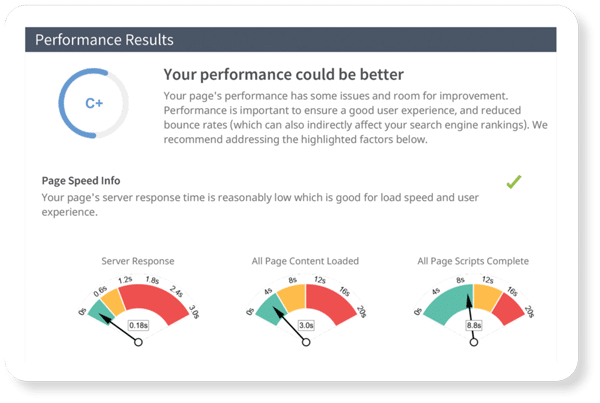Build. Measure. Learn
You own or manage a business, but more than likely, your schooling was not focused on the business side of things. Yet, it is crucial to understand the measurements and data you should be looking at to help your business grow. Today’s blog post focuses on just that.
Your business should always embrace continuous improvement and development. You have worked hard and built your business to align with your skillset/specialty. Now you need to measure your success - how do people hear about you, what they want more/less of, etc. As you collect this information, you learn from it, and you optimize. This continuous feedback loop gives you validated learning about your practice, clients, and operations. All of this information gathering will help you discover “What will be truly valuable to our customers?” Thus making you a better provider to your clients.
Let’s do a little exercise that we do with our clients - we would like you to take a few minutes to ask yourself, “How do you know if your business is successful?” What is on that list? Is it your staff? A new product? Something that differentiates you?
Now ask yourself - “What are the metrics you use to decide if you are successful?”
Do these measure your success, or is it just a vanity metric? A vanity metric is a metric that may be improving, yet your revenue/bottom line is not improving. For example, your website visitors may have jumped 50%, and that should be exciting. However, your leads haven’t increased. So, even though the traffic is growing, you aren’t getting any additional leads - then you are not being intellectually honest and using the right data to tell your story.
What you should be Measuring
AMB
One of the first things you should think about when you think about your practice’s success is AMB: As Measured By. AMB is the unit of measurement that will tell how you are doing. AMB has to be a computable number that is easily calculated. This number should tell you how you are performing against your chosen metrics. AMB could be anything from new leads, new clients, product sales…whatever moves the bottom line the most for you. For example, if you add a new product or service, you can create a hypothesis on the result for customer retention, upsells, and ROI.
Customer Lifetime Value (LTV)
Do you know how much each new Customer is worth once they are acquired? Here is the formula we recommend you use to measure this:
Annual customer revenue X Customer relationship in years MINUS Customer acquisition Cost = Customer LTV
Customer Acquisition Costs (CAC)
How does this relate to your Customer LTV and how is that affecting your ROI
A customer doesn’t usually just come in. There is typically a cost associated with it, even with a referral. And be aware, this is not only your marketing costs (although that is part of the equation). You need to think about - what is your time/your team’s time worth? What other overhead is going into bringing in a new person into your office? Your CAC should include your hourly rate and all estimated hours spent with a client (including non-billable hours). Our general rule is that your CLTV is 3x your CAC. This might take some time to build up to but will give you a goal to reach.
All of this will help you figure out your ROI from a new product investment or your monthly marketing fee with MyAdvice. You might be spending $X every month with us to grow your brand. However, you have seen an increase in customers month over month and can then attribute actionable revenue to these costs. These costs might be increasing your CLTV or decreasing your CAC.
Now What
Everyone that works at your practice needs to know and understand your goals. Everyone should understand your written customer success plan. These are some of the examples we give:
- Do you have a maximum amount of time to keep customers on hold or in the waiting room?
- Do you have a standardized phone greeting?
- Do you have expectations around the time it should take to answer an email?
- Are you pushing your loyalty program?
- Is everyone trained on upselling and cross-sell opportunities?
- Most valuable clients - do you understand who they are, how to retain them, and keep them focused on why you matter to them?
- Does everyone understand your goals and values? Are they posted somewhere in the office?
All of these examples affect your company's culture and values. And all of these affect your first impression on your clients since your front desk staff is crucial to your client’s experience.
We all know problems happen - nothing is ever going to be perfect.
It is how you deal with the problems and what you learn from them that helps you improve in the future. Your culture should empower everyone in your business to “ see something, say something.” When people feel empowered to help you save money and protect you from blindspots you may not see, your practice wins. Your employees will buy into your culture, understand the importance of CLTV, and want to see it improve.
3 Strategies For Continuous Improvement
1. Improve your initial and ongoing training - you might think you don’t have the time or costs too much. You might think - it’s easier to train them by letting them shadow someone. However, if you never train them on what you want them to learn, you have a bigger problem down the line, and it might decrease your CLTV if they learn something the wrong way. Train people how you want them trained and from day one emphasize the goals of your business.
2. Tie bonuses to your business objectives - are they tied to your CLTV, or are they related to a new product or service that helps boost revenue. These bonuses help bring your entire organization together and push for the same goals and objectives.
3. Utilize the 5 Whys - This will help you figure out where the root of a problem is. Make sure everyone involved is present. The conversation should not be accusatory or put someone on the defense. You ask 5 “why” questions to get to the root of an issue. By asking five questions to dig into a problem, you usually learn something a lot deeper than the initial point that came up.
All three of these bring us back to our initial point.
Learn, Build, Measure. Build the process, measure your KPIs against what your objectives are, and learn about your process.
Click here to watch our complete webinar on How Customer Lifetime Value Impacts Your Business.



